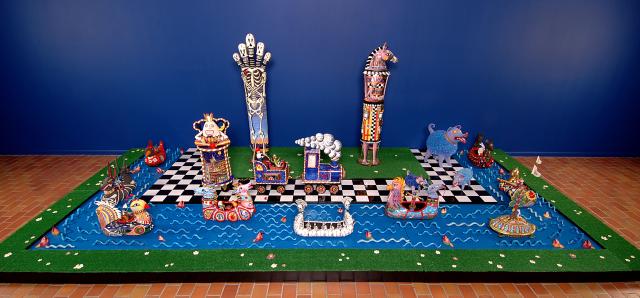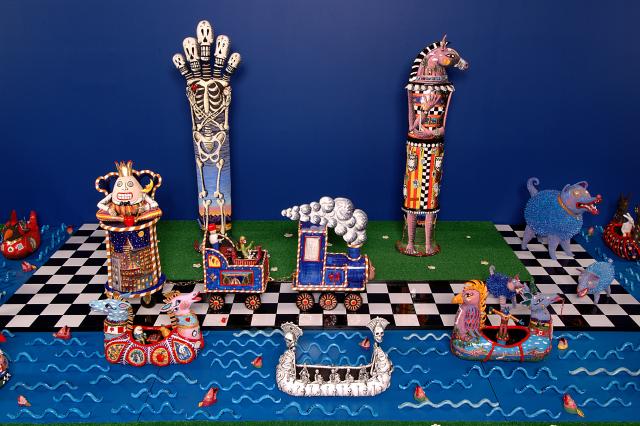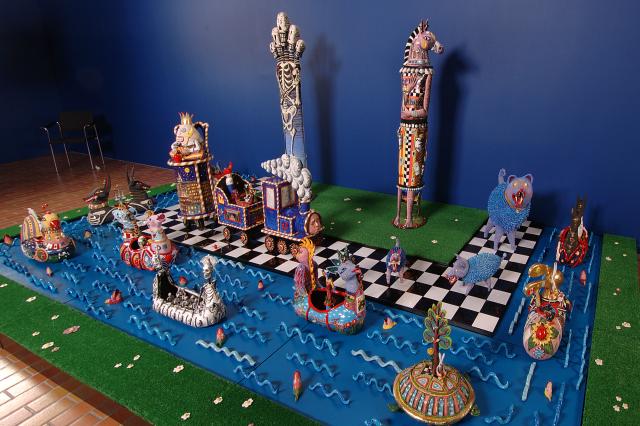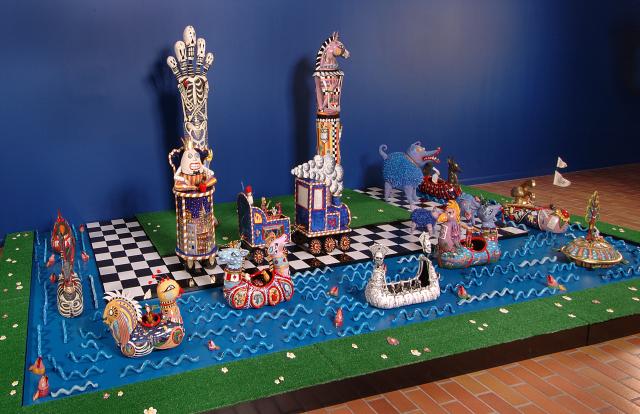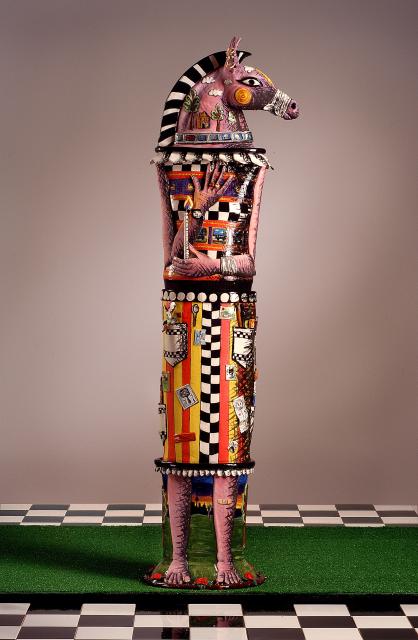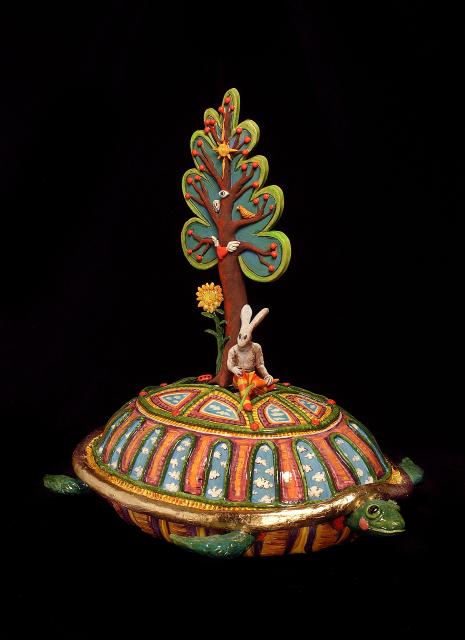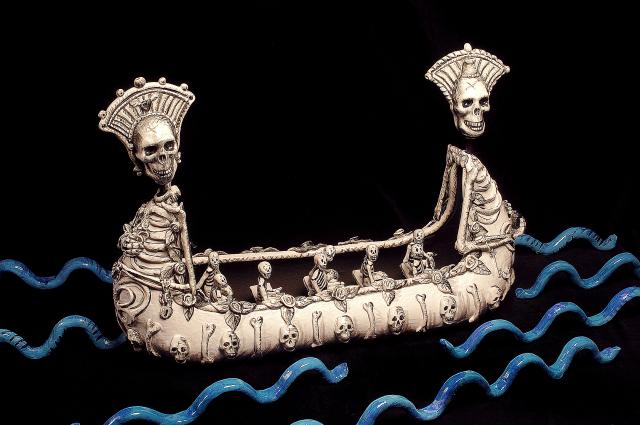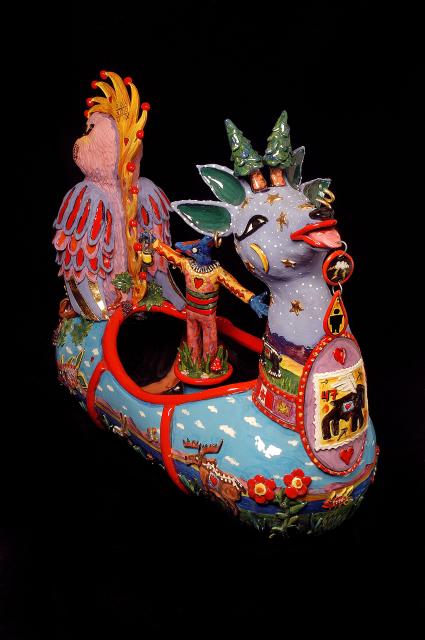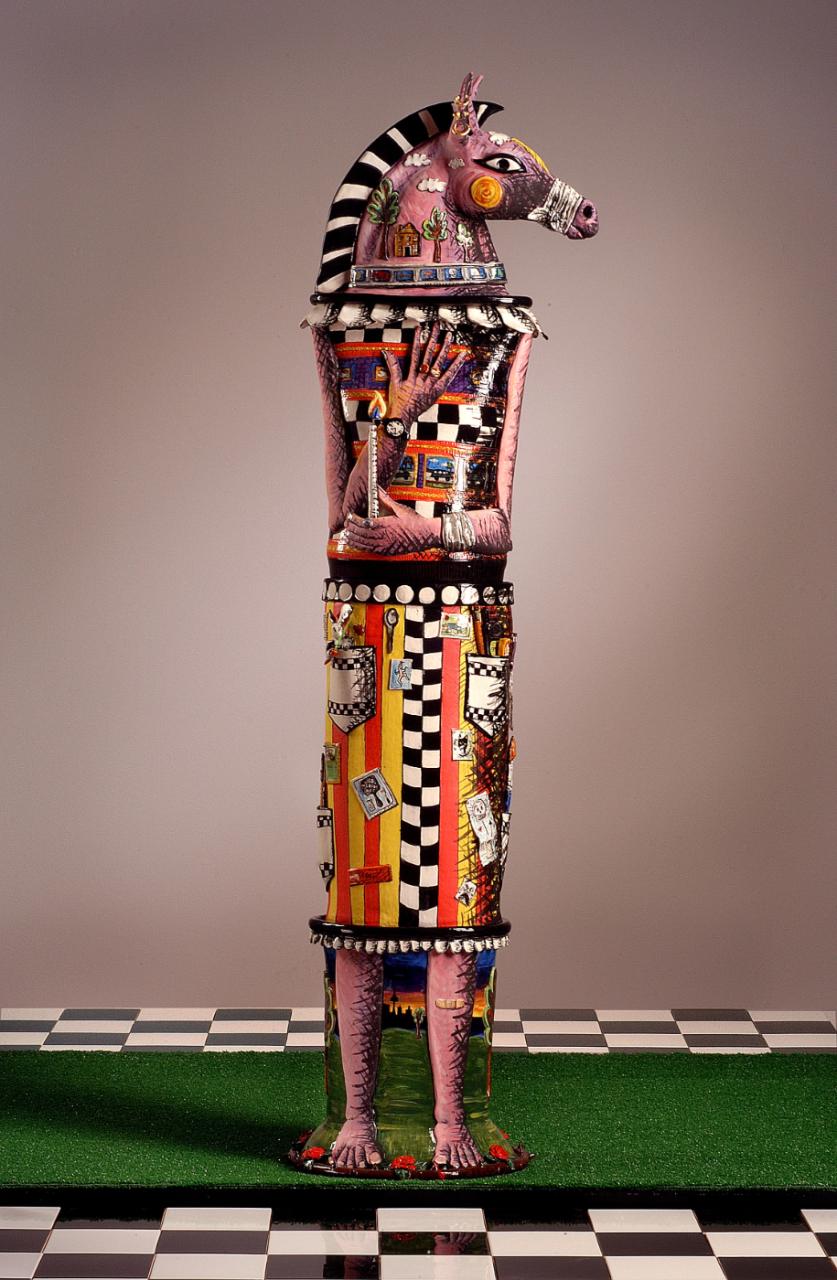
Exhibition
25 Nov 2004 - 15 Jan 2005
OPENING RECEPTION
Thursday November 25, 2000
7 – 10 PM
Diary: of a river
Kirsten Abrahamson
The landscape of Abrahamson’s narrative installation Diary: of a river, 2001 - 2004, is reminiscent of a child’s playground filtered through the macabre vision of Alice in Wonderland, the Wizard of Oz, or Grimm’s Fairy Tales. Brilliantly coloured creatures parade around a chess board which encircles a central mound, which in turn is surrounded by an unsettled river. The installation is alive with colour, movement and iconic images. Everyone is moving eastward; the “push me-pull you’s” confound easy movement; the central horse figure cannot speak; and the horse’s companion - a nearly life-size skeleton with multiple heads - oversees all of the life passages swirling about him.
In Diary: of a river, the artist’s persona rests in the gagged horse. Others in her life figure prominently: for instance, her daughter is the ladybug; her son, the hare. Flowing down the river are several boats; and on the checkerboard track, a train. Each vessel is filled with the baggage, detritus and joys of living. Every detail is expressed within a symbolic language developed by the artist to reveal the moments, events, and emotions of her life. A moose, hare, fish, and ladybug; a moon, stars, trees and apple; a flag, compass, buildings and clock, all reference very specific real people, places and events. Yet, the story is camouflaged through cryptic symbolic forms and an overall presentation that appears to be a joyous scene of brilliantly coloured and decorated figures tramping and sailing through a curious landscape. Despite its apparent gaiety of form, the installation is punctuated with elements that reveal the turmoil of the narrative. Skeletons, barking dogs, two-headed creatures, clocks, “fragile” and “peace” signs, and the presence of the jackal, Isis - a guide to the underworld - are indicators of the blackness of the tale. Nevertheless, the turtle sculpture portents a hopeful future. Placed on a pedestal in the centre of the checkered narrative, the beautiful turtle glitters like a Faberge egg. On his back, sit the hare and the ladybug, safe and warm beneath a tree in glorious bloom.
Diary is a tale that is personal, and in that sense, it is meant to be private. Thus, despite the succinct and repeated vocabulary, the specific story remains a mystery. Yet as autobiographical, it is also grist for the artist’s work. As such, the nature of the work expands, and it becomes indicative of lives lived and the trials and tribulations that everyone experiences as they travel down the river which is their life: developing relationships; losing others; building careers; determining what works; what is longed for; and what one’s path might be. Diary: of a river eloquently and with passionate abandon, documents one life and in doing so reveals the nature of human experience.
Carol Podedworny
Director/Curator, UWAG
October 2004
Kirsten Abrahamson has a rich understanding of, and formal skill with, world ceramic traditions from the 19th century through to the 21st. It is probably the early 20th century American figurative ceramic traditions, however, with whom she shares the greatest affinities. Abrahamson’s work reflects the bold, satirical, and colourful, narrative and figurative leanings of both the California Funk and Bay Area Ceramics traditions of the western United Sates. Her work is also informed by their use of low-fire clay and glazes. Low-fire clay enables the artist to create larger scale objects without the fear of cracking or breakage, and low-fire glazes offer a brighter colour palette of dependably reproducible colours. The latter gave ceramists, as Abrahamson notes, “the ability to work as painters did.” Moreover, Abrahamson’s autobiographical works recall the socio-political interests of the Funk artists as well as their “daring attempts at confronting and satirically parodying actual events.”
Show curated by Richard Gordon
